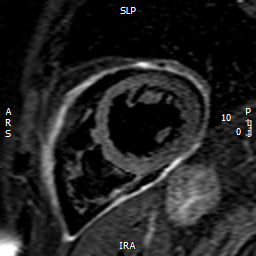The group organises between five and six meetings per year, post pandemic these meetings are held on MS Teams, organised by each center in turn. They are formally accredited by the Royal College of Physicians of London for 3 CPD points/meeting, and are open to consultants, trainees, and allied healthcare professionals with an interest in CMR. The meetings are free to attend please get in touch if you are keen to attend.
The planned meetings are noted below.
![Page 3 Meetings[1]](https://www.necmr.org/wp-content/uploads/2015/12/Page-3-Meetings1.gif)
| Date | Time | Venue | Organiser |
|---|---|---|---|
| Wednesday 26th June 2024 | 14:00-17:00 | MS Teams | CDDFT/Sunderland |
| Thursday 12th and Friday 13th Sept 2024 | Level 1 course | ||
| Tuesday 17th September 2024 | 14:00-17:00 | MS Teams | Newcastle Hospitals |
| Friday 20th November 2024 | 14:00-17:00 | MS Teams | James Cook |
At each meeting we use the first 90 minutes to look at regional cases that either provide a diagnostic dilemma to utilise the experience in the room, or cases that provide nice examples of conditions that can be studied with CMR. The second half of the meeting is on a more specific topic prepared by the unit consultants and registrars
Since the initial meetings in 2015 we have covered wide ranging topics including
Comparison of Regadenason vs Adenosine as vasodilator stress in CMR.
CMR findings in Takotsubo cardiomyopathy
CMR in the work up for TAVI
CMR in pulmonary hypertension.
The role of T1 mapping in routine CMR outside research
MRI assessment of athletes as part of overall risk assessment
PET CT for diagnosing cardiac sarcoid
CMR to assess valvular heart disease with review of the literature on CMR parameters associated with the need for valve intervention
Non compaction- fact or fiction
Clinico-pathological correlates of LV pre-dominant ARVC
CMR in intra cardiac Shunts
Change in normal range for Cardiac chamber size due to the Biobank data
Differentiating athletic heart from early dilated cardiomyopathy, looking at advanced methodology including CSPAMM tracking and T1 map derived ECV calculation.
Use of CMR in identifying aetiology of MINOCA
The Ischaemia Trials and the value of CMR in identifying Ischaemia
Merits of late gadolinium enhancement degree to predict risk of SCD in HCM.
Regional discussion around increasing access of patients with CIEDs to MRI scanning.
Mitral annular dysjunction, increased identification, what significance?
Advanced radiographer training in CMR reporting
Quantitative perfusion in Regadenoson Stress MRI
Cardiac MRI in Carcinoid Heart disease
Cardiac MRI in Rheumatological disease
Stress Perfusion imaging in assessment of Dilated cardiomyopathy
We have discussed many regional cases including examples of Anderson Fabry’s disease, cardiomyopathy associated with Fredrichs ataxia, cardiac mitochondrial disease, mass lesions including primary cardiac masses and secondary lesions such as an invasive thymoma. We have reviewed congenital cases including new presentation of congenitally corrected transposition, and complications after coarct surgery. Many cases where there has been diagnostic dilemmas, including LV predominant ARVD, cardiac scleroderma, cocaine cardiomyopathy, profound lipomatous hypertrophy of the IAS causing SVC compression, RV Takotsubo cardiomyopathy, focal pericardial clot presenting with IVC insertion stenosis causing peripheral oedema.

